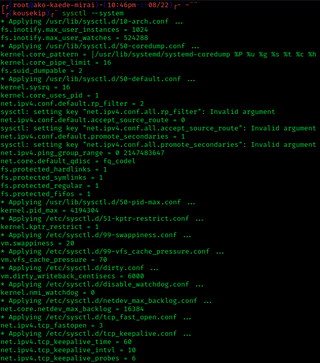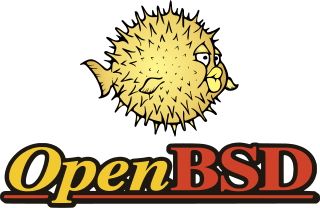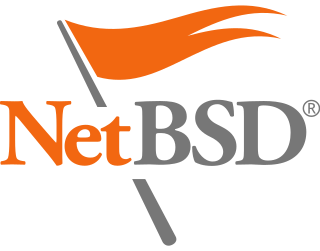
I2C (Inter-Integrated Circuit; pronounced as “eye-squared-see” or “eye-two-see”), alternatively known as I2C or IIC, is a synchronous, multi-controller/multi-target (historically-termed as master/slave), single-ended, serial communication bus invented in 1982 by Philips Semiconductors. It is widely used for attaching lower-speed peripheral integrated circuits (ICs) to processors and microcontrollers in short-distance, intra-board communication.
NMEA 0183 is a combined electrical and data specification for communication between marine electronics such as echo sounder, sonars, anemometer, gyrocompass, autopilot, GPS receivers and many other types of instruments. It has been defined and is controlled by the National Marine Electronics Association (NMEA). It replaces the earlier NMEA 0180 and NMEA 0182 standards. In leisure marine applications, it is slowly being phased out in favor of the newer NMEA 2000 standard, though NMEA 0183 remains the norm in commercial shipping.

Open Firmware is a standard defining the interfaces of a computer firmware system, formerly endorsed by the Institute of Electrical and Electronics Engineers (IEEE). It originated at Sun Microsystems where it was known as OpenBoot, and has been used by multiple vendors including Sun, Apple, IBM and ARM.

Matthew Dillon is an American software engineer known for Amiga software, contributions to FreeBSD and for starting and leading the DragonFly BSD project since 2003.
A disk array controller is a device that manages the physical disk drives and presents them to the computer as logical units. It almost always implements hardware RAID, thus it is sometimes referred to as RAID controller. It also often provides additional disk cache.
sysfs is a pseudo file system provided by the Linux kernel that exports information about various kernel subsystems, hardware devices, and associated device drivers from the kernel's device model to user space through virtual files. In addition to providing information about various devices and kernel subsystems, exported virtual files are also used for their configuration.

sysctl is a software mechanism in some Unix-like operating systems that reads and modifies the attributes of the system kernel such as its version number, maximum limits, and security settings. It is available both as a system call for compiled programs, and an administrator command for interactive use and scripting. Linux additionally exposes sysctl as a virtual file system.
In computing, ioctl is a system call for device-specific input/output operations and other operations which cannot be expressed by regular file semantics. It takes a parameter specifying a request code; the effect of a call depends completely on the request code. Request codes are often device-specific. For instance, a CD-ROM device driver which can instruct a physical device to eject a disc would provide an ioctl request code to do so. Device-independent request codes are sometimes used to give userspace access to kernel functions which are only used by core system software or still under development.

Super I/O is a class of I/O controller integrated circuits that began to be used on personal computer motherboards in the late 1980s, originally as add-in cards, later embedded on the motherboards. A super I/O chip combines interfaces for a variety of low-bandwidth devices. Now it is mostly merged with EC.
A system monitor is a hardware or software component used to monitor system resources and performance in a computer system.
In the context of free and open-source software, proprietary software only available as a binary executable is referred to as a blob or binary blob. The term usually refers to a device driver module loaded into the kernel of an open-source operating system, and is sometimes also applied to code running outside the kernel, such as system firmware images, microcode updates, or userland programs. The term blob was first used in database management systems to describe a collection of binary data stored as a single entity.

lm_sensors is a free open-source software-tool for Linux that provides tools and drivers for monitoring temperatures, voltage, humidity, and fans. It can also detect chassis intrusions.
Proprietary firmware is any firmware that has had its use, private modification, copying, or republishing restricted by the producer. Proprietors may enforce restrictions by technical means, such as by restricting source code access, firmware replacement restrictions, or by legal means, such as through copyright and patents. Alternatives to proprietary firmware may be free (libre) or open-source.

OpenBSD is a security-focused, free and open-source, Unix-like operating system based on the Berkeley Software Distribution (BSD). Theo de Raadt created OpenBSD in 1995 by forking NetBSD 1.0. The OpenBSD project emphasizes portability, standardization, correctness, proactive security, and integrated cryptography.
Sensors are devices that measure physical quantities and convert them into signals which can be read by observers or by instruments.

NetBSD is a free and open-source Unix-like operating system based on the Berkeley Software Distribution (BSD). It was the first open-source BSD descendant officially released after 386BSD was forked. It continues to be actively developed and is available for many platforms, including servers, desktops, handheld devices, and embedded systems.
The envsys framework is a kernel-level hardware monitoring sensors framework in NetBSD. As of 4 March 2019, the framework is used by close to 85 device drivers to export various environmental monitoring sensors, as evidenced by references of the sysmon_envsys_register symbol within the sys path of NetBSD; with temperature sensors, ENVSYS_STEMP, being the most likely type to be exported by any given driver. Sensors are registered with the kernel through sysmon_envsys(9) API. Consumption and monitoring of sensors from the userland is performed with the help of envstat utility through proplib(3) through ioctl(2) against the /dev/sysmon pseudo-device file, the powerd power management daemon that responds to kernel events by running scripts from /etc/powerd/scripts/, as well as third-party tools like symon and GKrellM from pkgsrc.
The bio(4) pseudo-device driver and the bioctl(8) utility implement a generic RAID volume management interface in OpenBSD and NetBSD. The idea behind this software is similar to ifconfig, where a single utility from the operating system can be used to control any RAID controller using a generic interface, instead of having to rely on many proprietary and custom RAID management utilities specific for each given hardware RAID manufacturer. Features include monitoring of the health status of the arrays, controlling identification through blinking the LEDs and managing of sound alarms, and specifying hot spare disks. Additionally, the softraid configuration in OpenBSD is delegated to bioctl as well; whereas the initial creation of volumes and configuration of hardware RAID is left to card BIOS as non-essential after the operating system has already been booted. Interfacing between the kernel and userland is performed through the ioctl system call through the /dev/bio pseudo-device.
systat is a BSD UNIX console application for displaying system statistics in fullscreen mode using ncurses/curses. It is available on, and by default ships in the base systems of, FreeBSD, NetBSD, OpenBSD and DragonFly BSD. It was first released as part of 4.3BSD in 1986.







